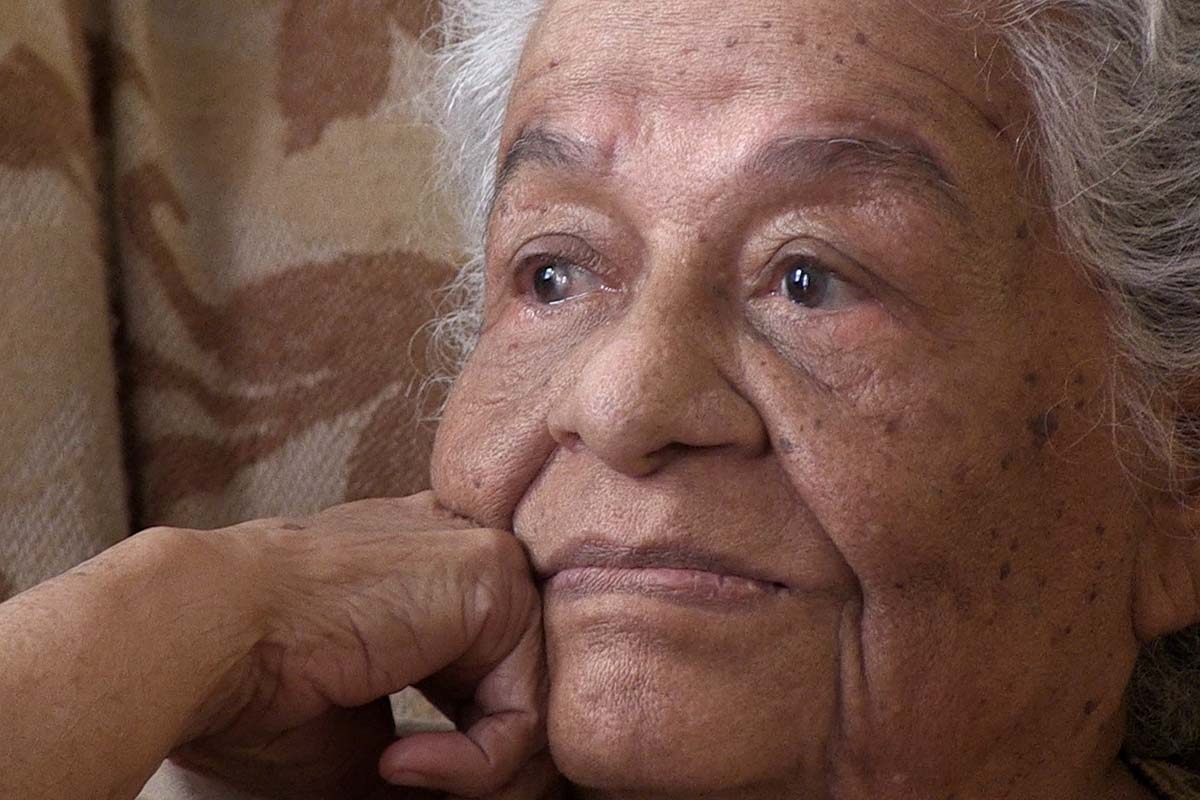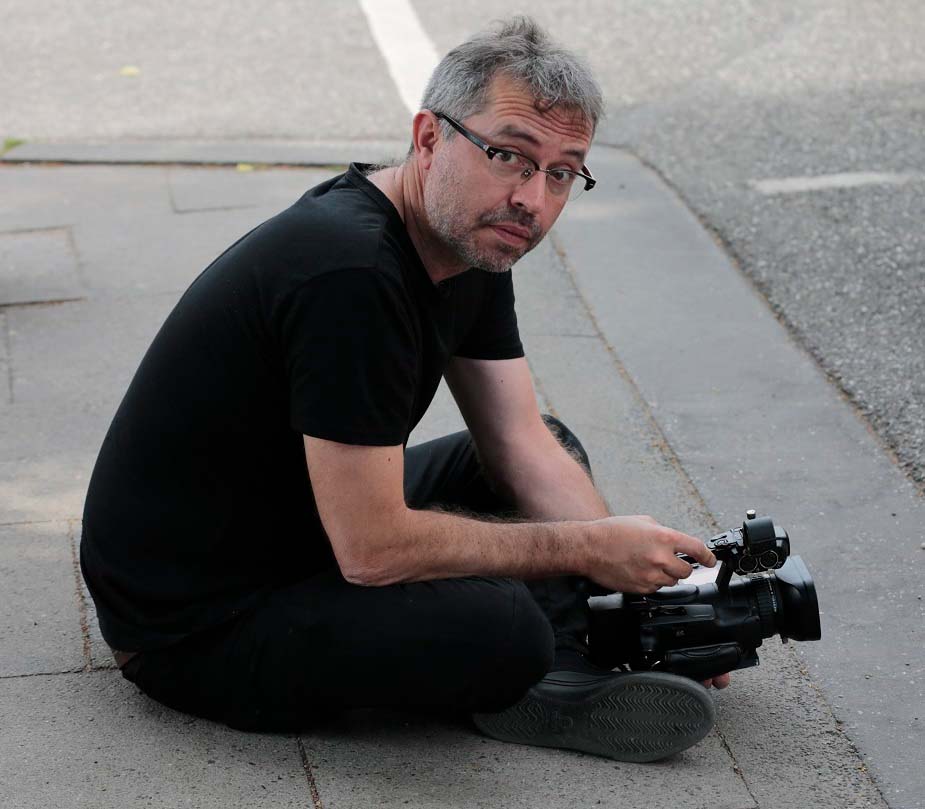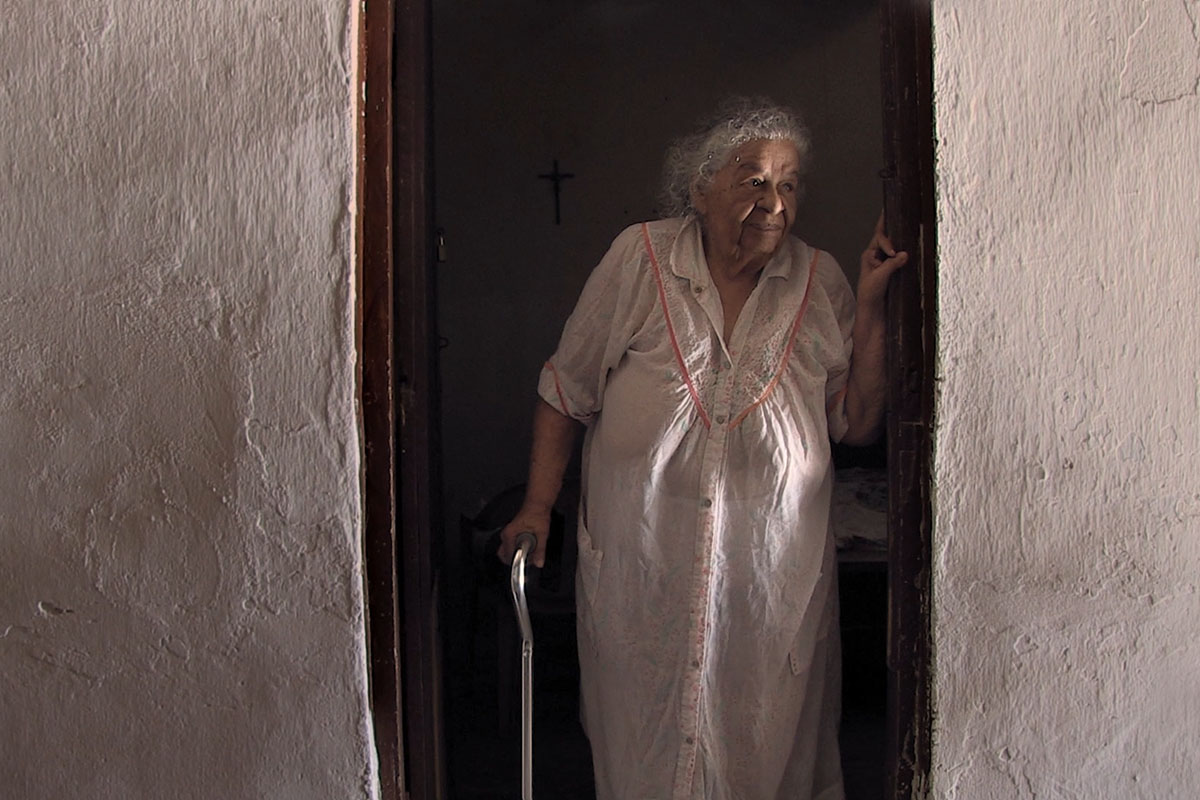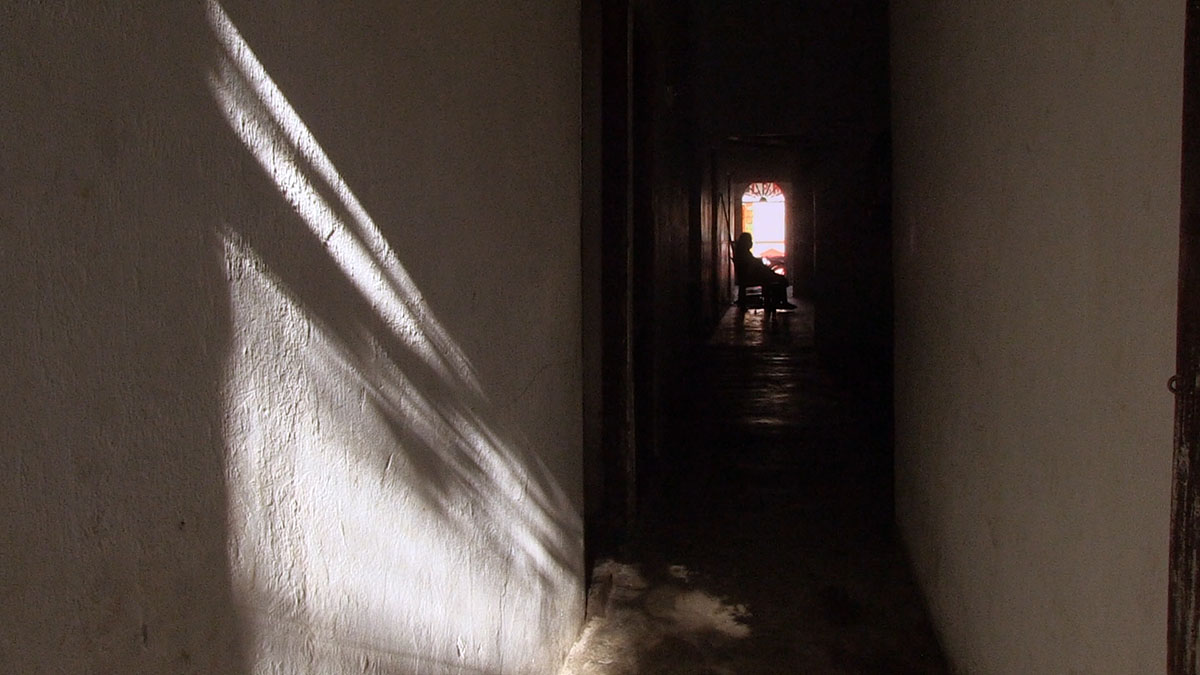
How do you make nostalgia visible? Or a house you only dream about? It took Óscar Molina a long time in the editing room to answer those questions. But ultimately he did so in the opening sequence of La Casa de Mama Icha, his documentary about a migrant grandmother’s homecoming.
Molina has been a migrant himself. After graduating from journalism school in Colombia, he moved to Japan to do factory work. There he befriended many immigrants from around the world who shared the same dream: send enough money home to build a house in their native land with those remittances. By the time he moved to Philadelphia to get his MFA in film at Temple University, he was ready to bring that topic to life.
The director/cinematographer was looking for an elder who didn’t want to wait any longer to move into the house they’d built. He met María Dionisia Navarro, known as Mama Icha, through her granddaughter Michelle Ángela Ortiz, a Philadelphia artist and acquaintance of Molina’s. Thirty years earlier, Mama Icha had moved to the US to help her daughter raise her kids. Now 92, she was antsy to go back home.

The Scene
The film opens with a 30-second medium shot of Mama Icha sitting in an upholstered armchair. The camera is locked down, and the long duration of the shot forces us to study her face and surroundings. The elderly woman quietly fidgets and looks distressed. On a side table, we see a phone, water and lotion within reach. A plastic bag with more necessities hangs from her cane. This, we imagine, is her entire world.
Then a church bell rings and the scene cuts to her house in Colombia. We see a series of evocative details in fixed-frame shots: lush trees visible through a door’s transom, shadows of rustling leaves on various interior walls, sunlight streaming through an open door that leads to a backyard. As these lyrical images play, she’s heard in voiceover talking about how she’ll feel so happy in her house, sitting among her plants in the sunshine. She says, “I think that if I go to Colombia, Óscar, I won’t come back here anymore.”
A final close-up rests on Mama Icha’s face. We’re back in Philadelphia, and she has a faraway gaze as she dreams of this house, so distant in time and place.
After this opening, the film follows Mama Icha to Colombia, where she’s in for a rude awakening. The house has fallen into disarray under the care of her son Alberto. Meanwhile her other son, Gustavo, eventually wants to sell the house to pay for her medical bills. Tensions erupt and family ties fray, as the aging matriarch loses control of how and where she will spend her final days.
The Shoot
Molina decided at the outset to mix two styles of shooting: observational, in which he’d follow characters with a handheld camera, and fixed-frame shots, taken by a camera on a tripod. “Having a still camera for me was talking about rootedness, attachment. Those tableau shots were trying to translate aesthetically the idea of being quiet, being rooted,” he says. Whereas “when I have a handheld camera, there’s the idea of movement, of going from one place to another.”
Explaining the prolonged length of the opening shot, he says, “That establishes the mood of the film. We’re talking about an elder person, one that has a particular relationship with time. She doesn’t have a lot of actions and for most of the day sits quietly. It tells us how she was dwelling, the small objects around her that she can get with her hand.” More importantly, “It reveals that something emotionally demanding is happening inside her.”
“I did that shot after shooting pretty continuously [in Philadelphia] for a month and a half,” Molina continues. By that point, Molina had learned how to film his subject best. “When I started, I was creating a lot of interactions, making myself very present,” he recalls. “As time passed and I looked at the footage, I realized I needed to be aware of the pace of Mama Icha.” Ultimately the film contains many such lengthy shots, including a much commented-on scene when Mama Icha makes coffee and dumps multiple spoons of sugar into her cup—a shot that ran twice as long in the rushes (and included twice as much sugar).

The lyrical details inside her Colombia house were made towards the end of shooting, over two years later. Commenting on the use of shadows to invoke Mama Icha’s dream house, Molina says, “It was a way to bring to the screen her inner agenda and inner emotions. I was trying to interpret that nostalgia, that idea of home that is filtered through many years of being absent. It’s a nostalgic place that is in her mind.”
The juxtaposition of the chair-bound elder with the details of her Colombia home had another layer of meaning: “It was the idea of being trapped in the first shot, then freeing herself through this dream.”
The voiceover was captured at still another point in time. It was part of the 20 hours the director had filmed in Philadelphia, when she expressed her wishes and desires. She was open to being filmed after she and the director had bonded over their homeland. Molina remembers first meeting Mama Icha over a very long lunch at her house. “For me, it felt like I was again in Colombia,” he recalls. “I’d lived in the US for four-and-a-half years. That day, I felt like I was back home, being again in this kind of Colombian environment.”
The opening sequence ends with an extreme close-up. It was one of the first shots Molina did. He was talking with her daughter, but sitting close to Mama Icha. “I saw the way she was staring out the window,” Molina recalls. He thought her eyes were compelling, so he turned with the camera and grabbed that shot. “It’s part of the first 20 minutes of footage that totals 180 hours,” he notes.
The Gear
Molina knew he’d be a one-man band when shooting. He didn’t have any financing when he started the project as a student at Temple. So he needed a camera that both fit his budget and was easy to use. He ultimately purchased a compact, lightweight Canon XF100 camcorder. “I wanted more control of sound,” he explains. He most appreciated its two audio terminals with independent controls. His shotgun mic was a Sennheiser ME66 coupled with a K6 powering module. His wireless omni-directional lavalier was a Sennheiser EW 112-p G3 system. He never tried to hide the lavalier. “It was like, ‘I am here, making the film.’ ” Nor did he intentionally expose it. The signal fed into a multi-track Zoom H4n Handy Recorder.
Molina’s lens was the HD camera’s built-in 10x zoom, equivalent to 30.4–304mm in 35mm. He kept the focal length mostly at 58mm, 38mm or 88mm. He used no film lights. The only additional gear was his tripod.

The Edit
“When I did those two recordings of Mama Icha sitting on the sofa at the beginning of production, and when I shot the shadows almost at the end of production, I didn’t know they’d be together,” Molina observes. “It’s not like a script I had in my mind.”
While Molina was alone throughout production, editing was a group effort. He gives much credit to editor Gustavo Vasco and producer Brenda Steinecke Soto for giving shape to this sequence, sifting through and digesting 180 hours of footage filmed over two-and-a-half years.
“We talked a lot about how much I should be present on the screen,” Molina recalls, who now lives outside Medellin with nine roosters and a menagerie of animals. In that opening voiceover, Mama Icha addresses him by name twice, but the degree of his presence was a question throughout the film. Ultimately, the director says, “It was so clear that my name and my presence, and the way I show up in the film, had to be there, because it was the way I approached the story. Many things happened because I was asking questions or having conversations with them. So it was not right to hide myself.”
Molina’s philosophy during production was simple. “It’s not really a process of strict planning,” he says, “but it’s giving yourself the freedom to frame and shoot things you think will be meaningful to the story. And giving yourself space during the edit to think about that ocean of footage, what moments to disperse, and what’s the right final order.”
La Casa de Mama Icha premiered on POV on October 18 and streams on PBS.org and POV.org through December 17.
Patricia Thomson is a longtime film journalist and a contributing writer for American Cinematographer.




